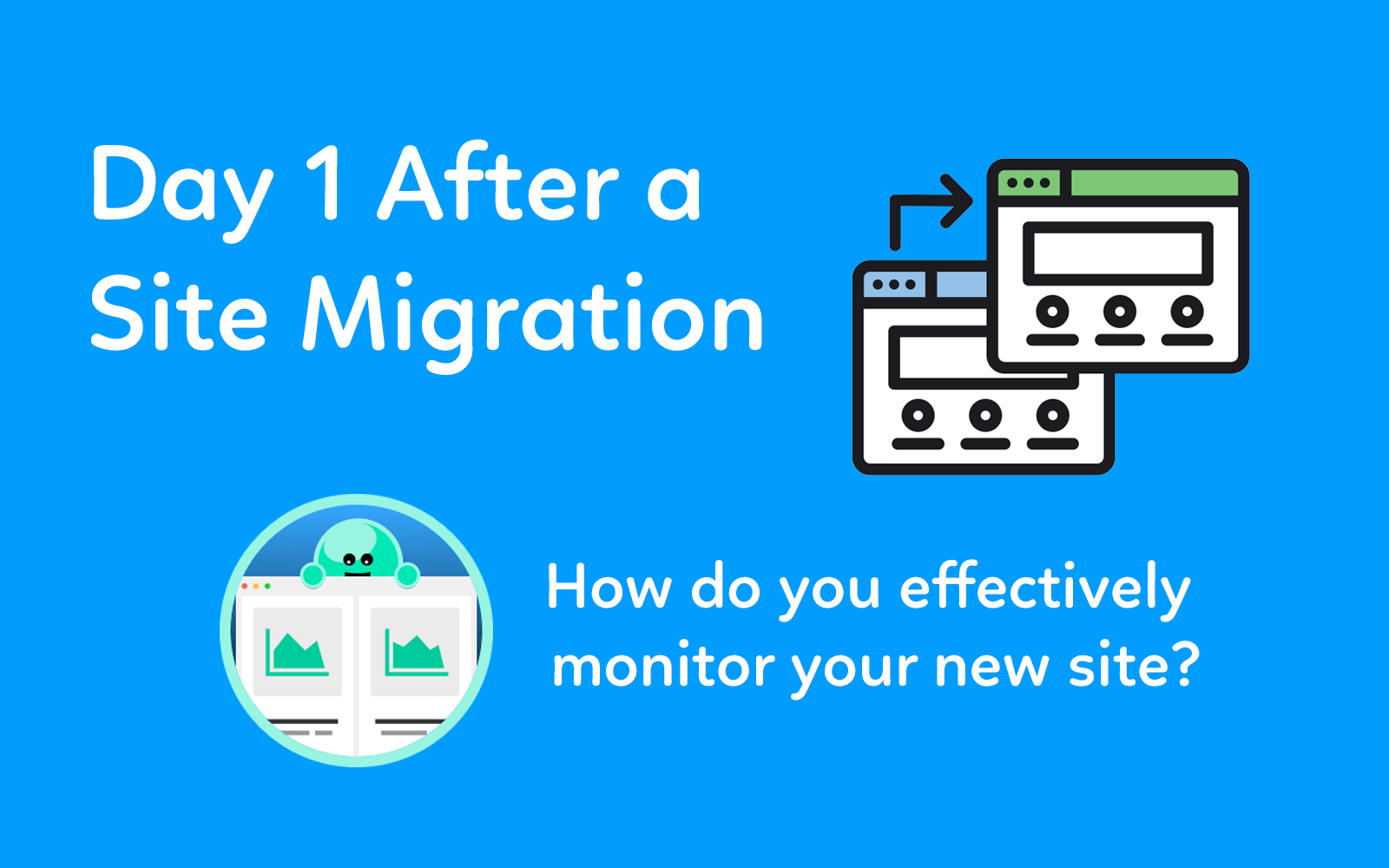There are a lot of reasons to migrate your site, from changing its design, backend, navigation, or structure to moving from HTTP to HTTPS. However, it is a process that needs concentration and detail to avoid losing traffic.
Even if you don’t see it clearly, there are many factors of your site that may be affected by a poorly executed site migration. Some of them are your web pages’ crawlability, indexability, ranking, or organic conversions.
So, if you have already gone through the first stages of a site migration, here you have some info to monitor the process like an expert.
Why is it so important to track your metrics after site migration?
In the worst-case scenario, if you don’t rigorously monitor your website, a small and straightforward mistake could lead to catastrophic consequences like making the traffic drop myth a reality. But that’s not all; it may also cause bad user experience, or spoil the accuracy of your site’s performance tracking.
301 redirects
In general terms, it is a common practice to use 301s. Especially when we perform a website migration, it is essential to find all the pages of the previous site and redirect them to the new one. And even though this might sound easy, the process has to be so thorough that you don’t leave a single one behind.
Otherwise, Google will start getting a lot of 404s status codes, which can lead to waste the crawl budget.
We recommend you to check all the pages of the old site are redirecting to the new one.
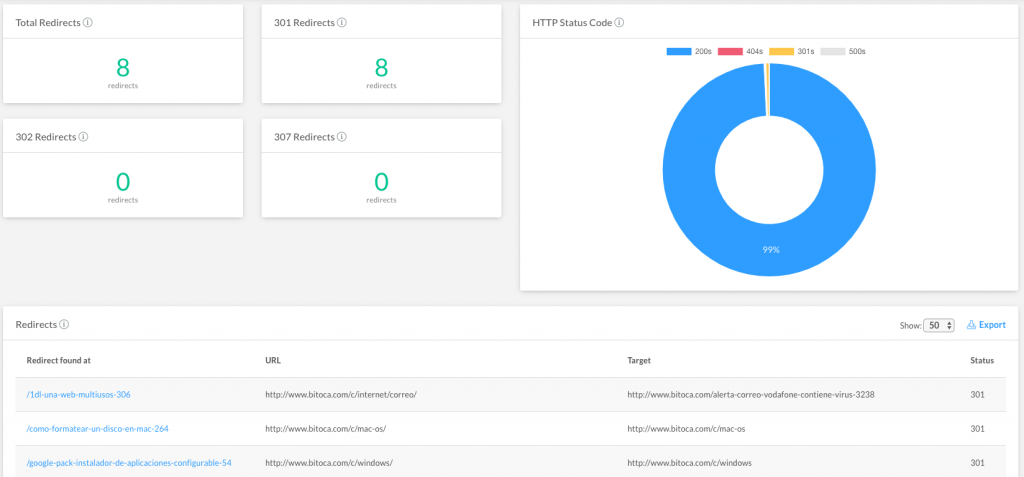
Canonicals
Canonical tags are a way of telling Google which page to consider when there are several pages with very similar content.
It is crucial to verify that the canonical tags on the new web pages are not pointing to the old website.
Indexing issues
Once you’ve migrated your site, Google may not index your site or may take a while to do so. It is therefore vital to check your web pages to ensure that no content has been left out.
It is equally important to verify that there are no 404, 410, or 500 errors on the new website.
Although it’s something that is recommended to do during the site migration process if you haven’t already done so, creating a Sitemap with the URLs of your new website and submitting it to Google Search Console can help to speed up the indexing.
At FandangoSEO you can get a Sitemap automatically crawling the site from which you want to extract the URLs.
Keeping a close track of your website allows you to take the necessary measures at the right timing.
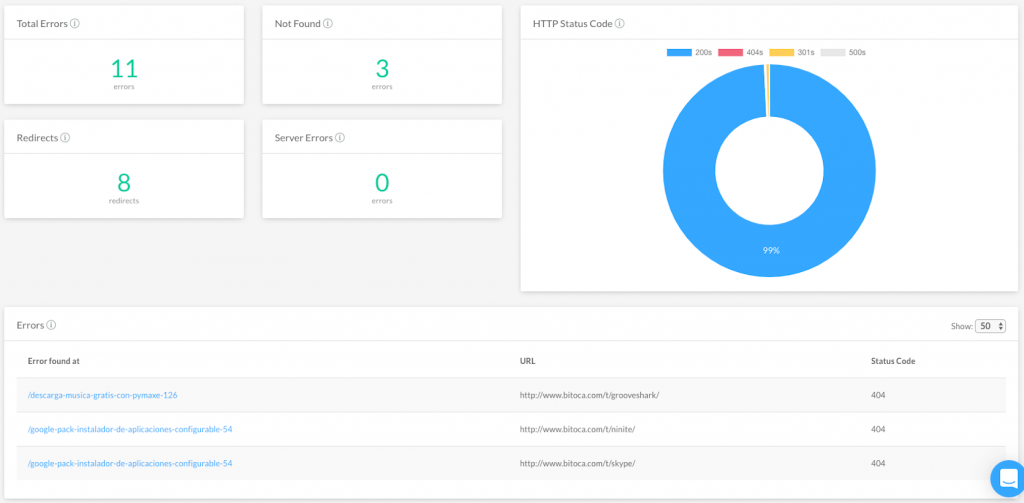
Losing your position in rankings
Although it is normal that ranking suffers a little damage if you didn’t foresee this aspect, it could -and most probably will- end up damaging your SEO visibility and traffic.
So, it is essential to keep an eye on the website’s ranking positions of both the previous and the new site during a couple of weeks. This way, you’ll have time to take the necessary actions to prevent a dramatical rank drop.
Comparisons are the Key
After the execution of a site migration, the entire process relies on monitoring and comparing both sites to guide it through. Here are some factors you should strongly consider if you are planning to or are in the process of site migration.
Compare your SEO performance
One of the essential aspects of this process is comparing the previous and current behavior of your site in rankings and conversions. And even though internal sources are great, you should also be monitoring it with some external tools to make sure you are getting the right and updated information.
Also, keep track of the conversion trend on both sites to ensure consistency and a positive trend. If the old site is going down, the new one should be going up at the same speed in general terms.
Most probably, your ranking is going to go a little down at the beginning. But don’t worry, the important thing after executing the site migration is ensuring that your new pages are being ranked for the correct keywords, both in desktop and mobile versions.
If you monitor the website’s SEO performance correctly and apply the necessary changes at the right timing, you will probably rank higher than you used to in the first place.
What is the quickest & easiest way to compare your new & old website?
When it comes to comparing your new website with the old one, you want to make sure that your site continues to be well optimized for SEO. This is something you can quickly check just by crawling your old and new website with FandangoSEO. Get comparative graphs that show the websites’ architecture structure. Keep your top pages in good shape.
SEO metrics are another indicator of whether your migration has been executed correctly. Compare your new and old website’s metrics and be sure they’ve done nothing but improve. Using our comparison tool, you’ll see a complete list with metrics relevant to SEO.
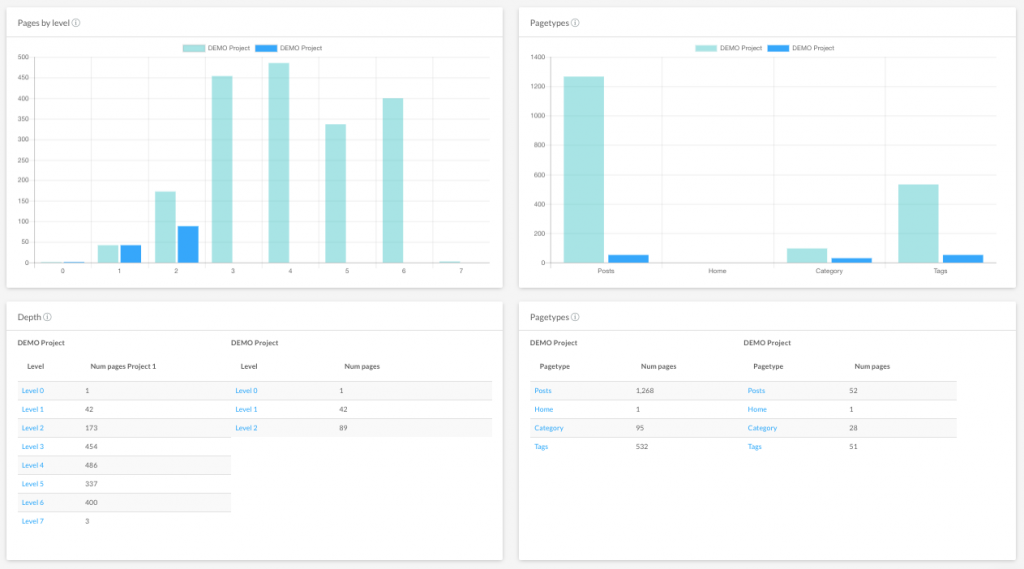
Check your website’s historical
It is vital that you make a comparison of your new and old web performance extracting data from a few months before the site migration. To do so, you’ll need to compare the average value of the primary metrics in the old site with the actual website’s metrics results. This will give you an idea of your website’s traffic fluctuation and performance.
As mentioned previously, you need to put special attention to your traffic when you migrate a website. This is not only in overall numbers, but also specifics like the amount of time they spend on your site, the bounce rate, the internal conversions, and the revenue. Everything should stay pretty much the same or improve.
Lean on reliable monitoring tools
Nowadays, there are excellent analytics services and SEO tools out there. Some of the greatest and most popular ones in terms of monitoring are Google Analytics, Google Search Console, SEMrush, and SISTRIX.
On the one hand, Google Analytics and Google Search Console will provide you with internal information about your website. You can measure and analyze your traffic fluctuations, users’ behavior, and web performance.
On the other, SEMrush and SISTRIX are great to validate your ranking positions.
FandangoSEO is integrated with these four tools so you can analyze its data in a simple and practical way. Additionally, you’ll be able to apply the filters of the sections you’ve created with our tool. This will provide you more accurate and enriched information.
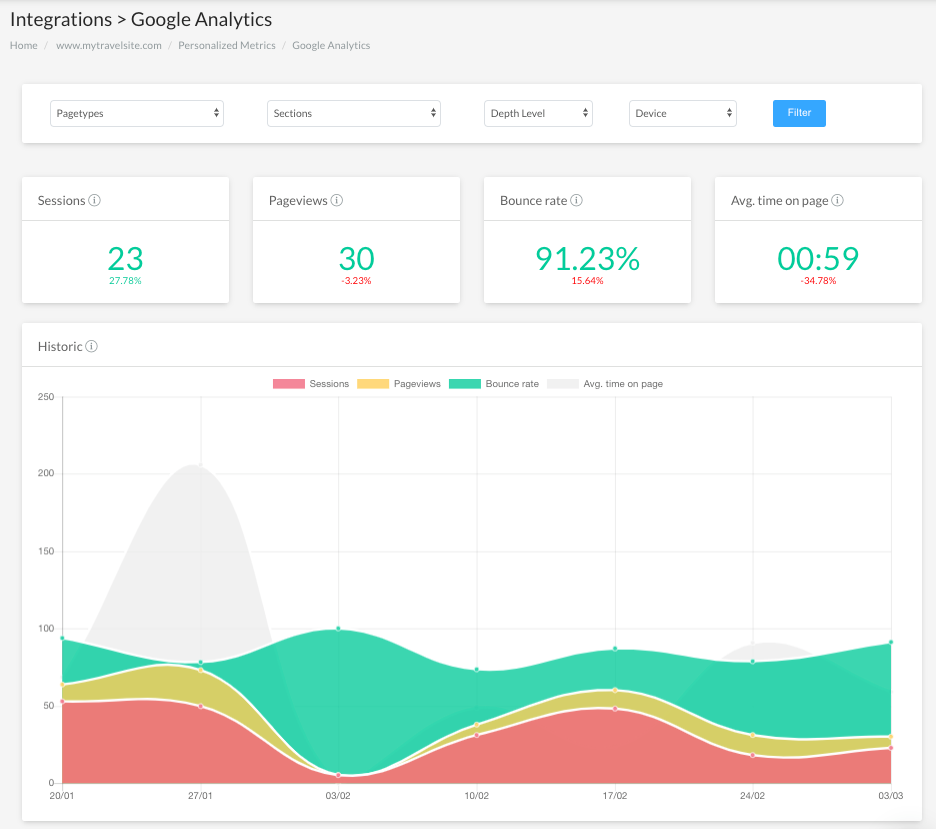
As you’ve seen so far, the large number of metrics you need to track makes SEO monitoring a complex task. That’s why it is strongly recommended to use a tool such as FandangoSEO, from which you can monitor them all at once. Additionally, you’ll receive email notifications with metric changes detected by our system, so you can always be aware of your web performance.
Let us know in the comments below if you’ve found this article useful and/or if you can think about any other aspect to consider after a site migration. We’ll also be happy to answer any questions you may have on this subject. Remember, sharing is caring. 😉
Last Updated on November 4, 2019 by Victor Perez Vas
